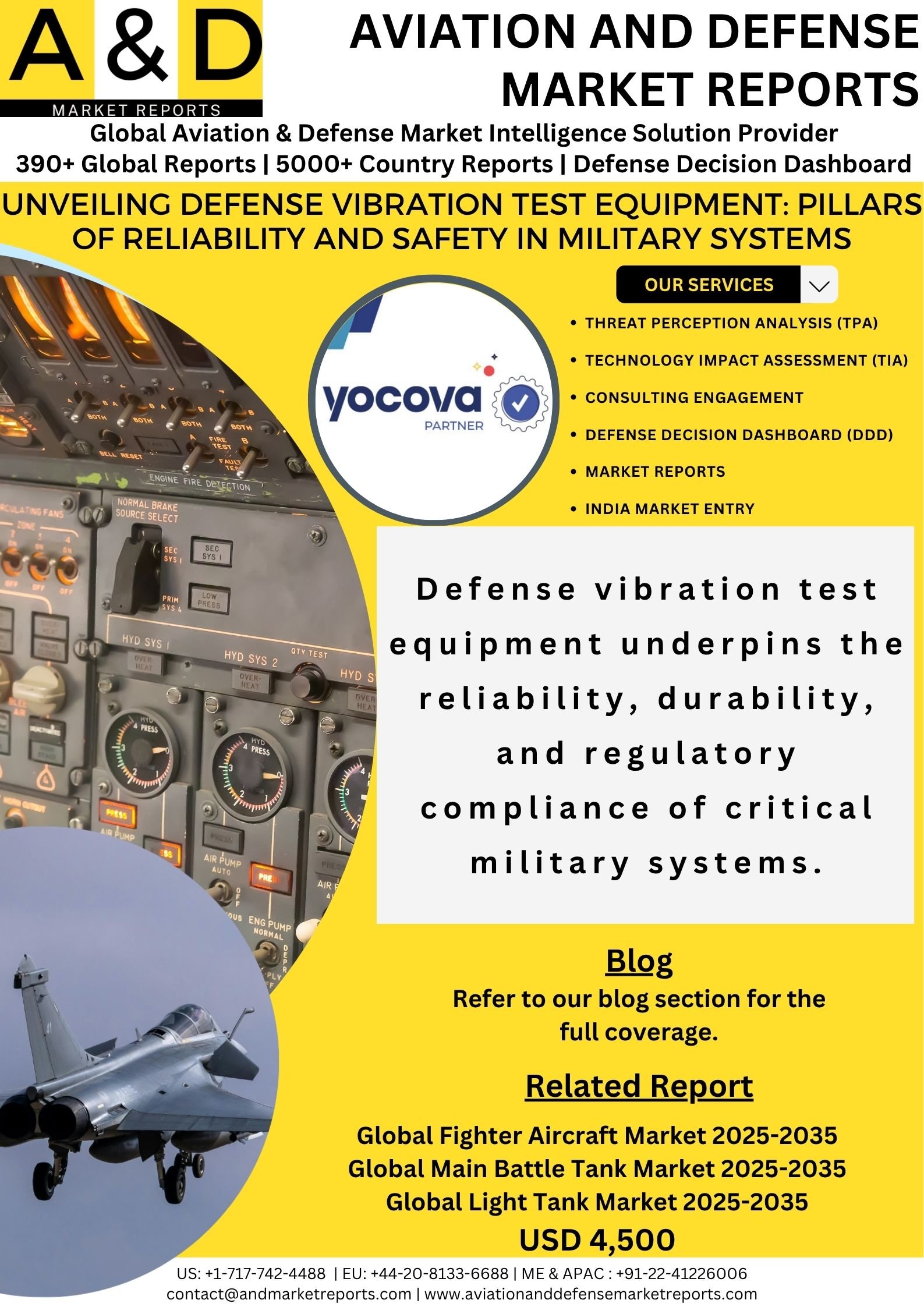Defense Vibration test equipment must endure some of the harshest operating environments imaginable, where mechanical reliability can be the difference between mission success and failure. Vibration test equipment forms the backbone of military quality assurance processes—enabling accurate simulation of real-world stresses that components and systems face on land, sea, and air. This blog explores the role, types, advancements, and critical standards of defense vibration testing, revealing how these technologies anchor durability, safety, and compliance in military hardware.
The Critical Need for Vibration Testing in Defense
Military vehicles, aircraft, weaponry, and communications gear are exposed to intense operational stresses—shock, vibration, pressure fluctuations, and temperature extremes. Each asset, from a tank suspension to a missile guidance system, must not only function reliably in routine missions but also withstand dramatic forces during transport, deployment, and combat. Vibration testing simulates these diverse challenges, offering engineers vital information about fatigue limits, resonance behavior, and structural vulnerabilities.
- Vibration tests help uncover weaknesses before costly field failures or mission-critical breakdowns.
- Simulated environments enable performance refinement, product qualification, and compliance with military standards like MIL-STD-810.
Types of Defense Vibration Testing
Defining the right vibration test scenario is central to military product safety and longevity. Several test modes exist, tailored to the operational realities of each asset:
- Random Vibration Testing: Exposes parts to varying frequencies, typical of road-induced oscillations or airborne turbulence. Used extensively for vehicles and aircraft, it reveals how components respond to unpredictable, multi-frequency vibrations.
- Sine Vibration Testing: Delivers sinusoidal signals at changing frequencies to detect resonant responses and structural integrity limits. Engineers identify weak points and optimize designs for enhanced durability.
- Shock and Combined Environment Testing: Simulates abrupt, high-energy impacts—akin to those experienced from explosions, weapon fire, or landing forces. Often paired with simultaneous temperature, humidity, and pressure stressors for maximum realism.
- Mixed-Mode Vibration (Sine-on-Random): Reflecting field conditions, such as gunfire vibration onboard helicopters where random baseline motion is overlaid with high-G sinusoidal pulses.
- Multi-Axis and Multi-Shaker Testing: Advanced facilities now support simultaneous testing along the X, Y, and Z axes, yielding a true-to-life simulation of actual field motion for systems like missile launchers or naval hardware.
Key Equipment Types and Capabilities
Defense vibration testing facilities are equipped with an array of sophisticated machinery and instrumentation:
- Electrodynamic Shakers: Central to the vibration lab, these systems convert electrical energy into controlled vibrational force, supporting random, sine, shock, and multi-axis modes. Frequency ranges often exceed 10,000 Hz, matching conditions seen in advanced guidance systems.
- Shock Test Systems: Specialized platforms capable of simulating free falls, bumps, and high-acceleration impacts using various waveform generators (half-sinusoidal, sawtooth, trapezoidal).
- Slip Tables and Head Expanders: Enable horizontal testing and adaptation for thermal chambers, allowing for simultaneous vibration and temperature cycling.
- Vibration Controllers and Signal Analyzers: Modern controllers offer real-time monitoring, programmable profiles, and rich analytics—some supporting multi-channel and multi-shaker setups, with precise synchronisation.
- Accelerometers and Transducers: Critical for measuring vibration response, these devices translate mechanical movements into quantifiable signals for deeper analysis and calibration.
Technological Advancements Shaping the Industry
Recent years have seen remarkable innovation in defense vibration testing:
- Digital Twin Integration: Virtual replicas of physical systems are subjected to simulated vibration scenarios, drastically reducing prototype destruction and accelerating R&D cycles.
- AI-Driven Analytics: Some platforms feature adaptive algorithms that adjust test parameters automatically, improving accuracy and reducing operational overhead.
- Multi-Axis and Mixed-Mode Testing Platforms: Providing simultaneous excitation and true-to-life stress simulation, these systems support complex defense components such as radar modules and unmanned vehicles.
- Enhanced Cooling and Load Control: High-force shakers are benefitting from dynamic cooling systems and load management, allowing the simulation of extreme conditions seen in missile launches or heavy-lift operations.
Compliance Standards and Safety Protocols
Maintaining adherence to recognized military standards is essential for product certification:
- MIL-STD-810: Encompasses protocols for vibration, shock, climatic, and mechanical tests aimed at ensuring readiness for deployment.
- Other Standards: DEF STAN 00-35, MIL-STD-167, MIL-STD-202H, IEC 60068, and NAVMAT P-9492 remain relevant for specific domains such as naval equipment, electrical assemblies, and European defense applications.
- Diligent compliance ensures that every system is robust, minimizing risk to personnel and asset integrity.
Applications in Defense Sectors
Defense vibration test equipment finds applications across a spectrum of military platforms:
- Armored Vehicles and Tanks: Road-induced vibration, gunfire shock, and mine blast simulation all demand rigorous testing for suspensions, electronics, and hull structures.
- Aircraft and Helicopters: Wing structures, avionics, missiles, and landing gear are put through high-frequency vibration and shock testing to certify flight readiness.
- Naval Vessels: Shipboard electronics, hulls, and weapons mountings are evaluated to ensure resilience against wave-induced motion and active combat shock.
- Missile and Guidance Systems: Precision electronics and mechanical casings require ultra-high-frequency and fatigue tests to prove their reliability under launch and impact conditions.
The Future of Defense Vibration Testing
As defense platforms become more technologically complex, the demand for smarter, more adaptable vibration test systems will intensify:
- Integration of machine learning and digital twin technologies promises ever-closer simulation of real-world battlefield scenarios.
- Increasing test automation and remote analytics will quicken design cycles while preserving the rigor and traceability required by defense quality assurance teams.
- Sustainability and modularization trends are emerging, with vibration systems now designed for energy efficiency and easier upgrades in line with the ever-changing nature of defense deployments.
In conclusion, defense vibration test equipment underpins the reliability, durability, and regulatory compliance of critical military systems. By embracing evolving test methodologies and pioneering technologies, the defense sector is well-positioned to mitigate risk, optimize performance, and uphold mission safety in the world’s most demanding environments.
